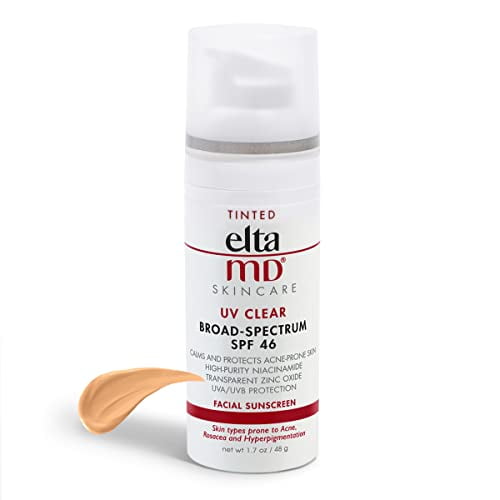
How to Choose the Right Sunscreen for Your Skin
As the sun starts shining brighter and the days grow longer, it’s time to talk about a crucial aspect of skincare: sunscreen. Whether you’re lounging on the beach 🏖️, hiking in the mountains 🏔️, or simply running errands around town, sunscreen is your best defence against harmful UV rays. However, with so many options available on the market, choosing the right sunscreen can be overwhelming. In this guide, we’ll look at the different aspects of sunscreen selection to help you find the perfect one for your skin.
Understanding SPF
Before we dive into the differences between mineral and chemical sunscreens, let’s talk about SPF (Sun Protection Factor). SPF indicates the level of protection a sunscreen provides against UVB rays, which are primarily responsible for sunburn. The higher the SPF, the greater the protection. Dermatologists typically recommend using a broad-spectrum sunscreen with SPF 30 or higher for adequate protection. 🏝️
Mineral vs. Chemical Sunscreens
The two main types of sunscreens available are mineral (physical) and chemical (organic) sunscreens. 🧴 Understanding the differences between them is essential for choosing the right one for your skin:
Mineral Sunscreens: These sunscreens contain active mineral ingredients such as zinc oxide and titanium dioxide, which work by sitting on top of the skin and reflecting UV rays away from the skin. They are known for being gentle and suitable for sensitive skin types. Mineral sunscreens offer immediate protection upon application and are less likely to cause irritation or allergic reactions.
Pros:
- Gentle formula suitable for sensitive skin types.
- Provides broad-spectrum protection against both UVA and UVB rays.
- Less likely to cause irritation or allergic reactions.
Cons:
- May leave a white cast on the skin, especially with higher concentrations of zinc oxide.
- Can feel heavier or thicker on the skin compared to chemical sunscreens.
Chemical Sunscreens: Chemical sunscreens contain organic (carbon-based) compounds like avobenzone, oxybenzone, octisalate, and octocrylene, which absorb UV rays and convert them into heat, which is then released from the skin. Chemical sunscreens are often preferred for their lightweight and sheer formulas, making them easier to apply and less likely to leave a white cast on the skin. However, some individuals with sensitive skin may experience irritation or allergic reactions to certain chemical sunscreen ingredients.
Pros:
- Often have a lightweight texture that blends seamlessly into the skin.
- Less likely to leave a white cast, making them suitable for all skin tones.
- Can provide water-resistant formulas for prolonged protection during outdoor activities.
Cons:
- Some chemical filters may cause skin irritation or allergic reactions, especially for those with sensitive skin.
- May not offer as broad-spectrum protection as mineral sunscreens, particularly against certain types of UVA rays.
Considerations for Choosing the Right Sunscreen
Now that we understand the differences between mineral and chemical sunscreens, here are some additional factors to consider when choosing the perfect sunscreen for you:
- Skin Type: Consider your skin type and any specific concerns you may have, such as sensitivity or acne-prone skin. Mineral sunscreens are generally well-tolerated by sensitive skin types, while those with oily or acne-prone skin may prefer lightweight, non-comedogenic formulas.
- Activity Level: If you’ll be engaging in outdoor activities or water sports, opt for a water-resistant sunscreen with a broad-spectrum SPF to ensure long-lasting protection, even when sweating or swimming.
- Cosmetic Preferences: Some individuals prefer mineral sunscreens for their physical barrier properties and natural ingredients, while others may prefer the lightweight texture and easy application of chemical sunscreens.
- Environmental Impact: Consider the environmental impact of the sunscreen you choose. Mineral sunscreens are often considered reef-safe and environmentally friendly, as they do not contain certain chemicals known to harm marine ecosystems.
By the way, both men and women should apply sunscreen regularly to protect their skin from sun damage. But how often should one apply sunscreen? Experts recommend reapplying every two hours, or more frequently if swimming or sweating heavily.
In conclusion, selecting the right sunscreen involves considering factors such as SPF, skin type, activity level, and personal preferences. Whether you opt for a mineral or chemical sunscreen, the most important thing is to apply it generously and reapply regularly, especially after swimming or sweating. By prioritizing sun protection, you can enjoy the sunshine safely and maintain healthy, radiant skin for years to come. 🌞
Transparency Matters: Some of the links in this guide may earn a commission. But rest assured that all recommendations are carefully curated based on their quality and relevance. Discover practical home and wellness solutions for a balanced, sustainable, and budget-friendly life at wellnesswiseways.com.












